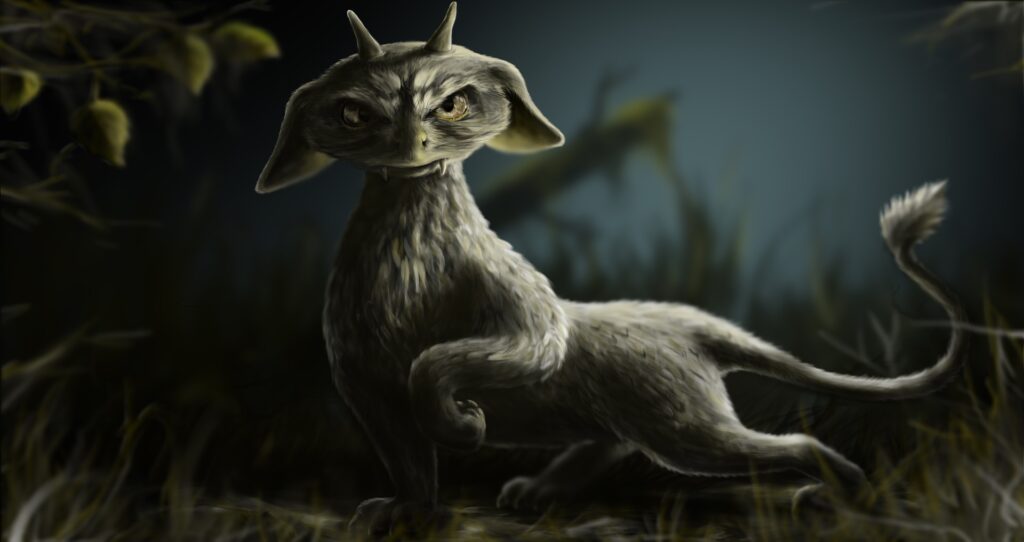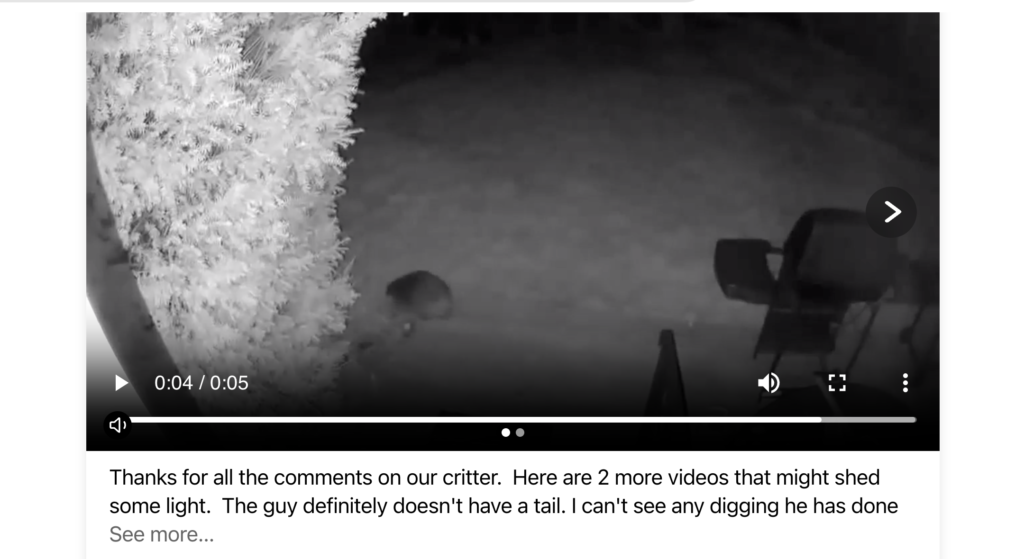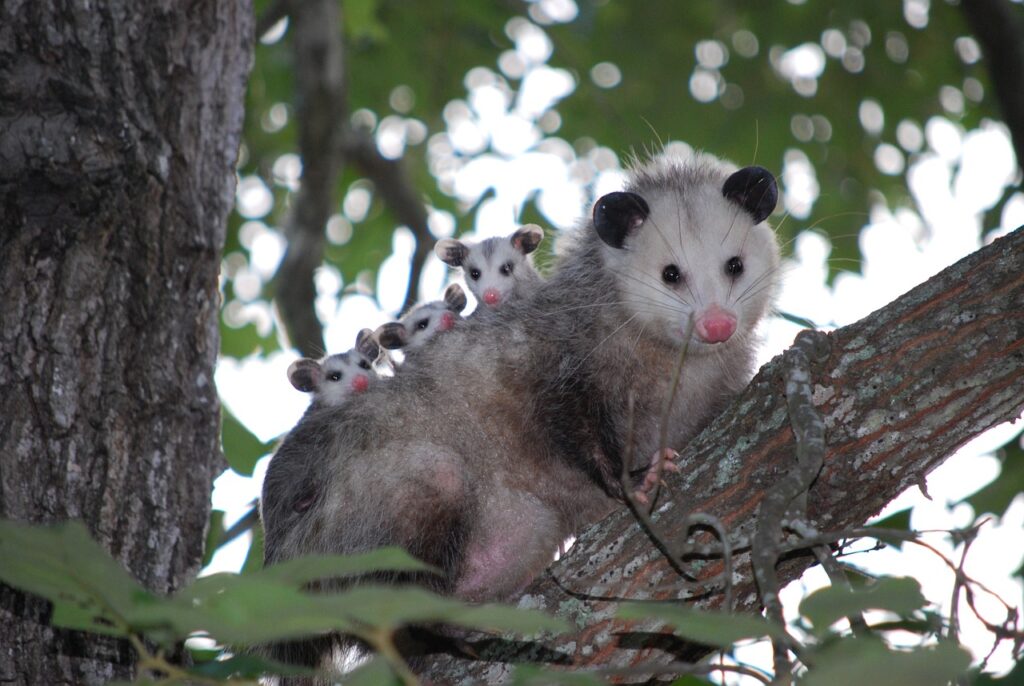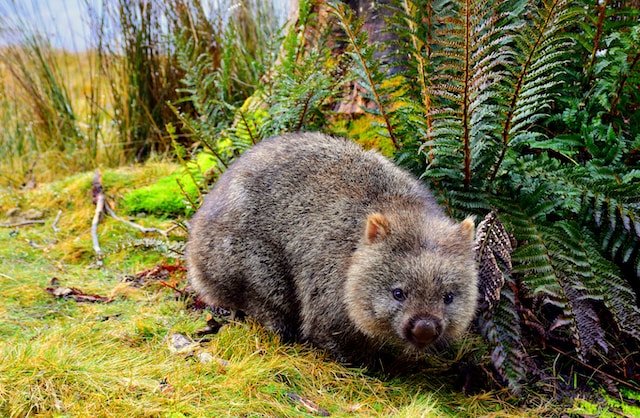A strange creature is stalking Boise

A UFC has been captured on film near where I live
Last week, while checking my local Nextdoor feed — no doubt you’re familiar with Nextdoor.com, the app that allows you to exchange neighborhood gossip online — I came across a video posted by someone in our ‘hood.
Captured by their movement-sensitive security cam, the UFC (Unidentified Furry Critter) ambles across their backyard before disappearing into the murk of an early spring night.
The first time the contributor posted, there were myriad responses. All were politely rejected by the poster, who had seen the beastie with their own eyes (albeit at night, by motion-detector light, through a patio door).
A raccoon? Nope, no tail. A badger! Ah, but no stripes, and the body shape is wrong. A rock chuck? Again, missing tail. A vole!
Seriously, if we have voles that size here, we may as well kiss our yards goodbye.
The same person posted another couple of vids a day or two later. Below is a screen capture of the clearer of the two, in which you can spot the UFC hunching along in its purposeful way.

This post got many likes (or “wows” or whatever) but few comments. It seemed the neighborhood’s collective store of wildlife expertise had run low.
However, one person declared that the creature was most definitely an American Wombat. A couple of other people replied to that comment with firm agreement. Yep, American Wombat. Has to be.
Excuse me?
I’m an amateur zoologist, kind of
In kindergarten, I used to say that when I grew up I wanted to be a ballerina, like all the other little girls. But I also wanted to be a field biologist.
Either that or a coyote. I was a weird kid.
Obviously, the coyote thing didn’t work out, and being a confirmed klutz, neither did ballet. And once I figured out what a field biologist’s day actually consisted of — a lot of scrabbling around outside in all weathers, mostly counting things, having to deal with lots of bugs — that option looked much less appealing.
However, as an adult I did spend several years as a docent at the Los Angeles Zoo, and I remain fascinated with wildlife. There isn’t a David Attenborough nature series I haven’t binged.
I know enough about zoology to be dangerous, or at least to ace the category on Jeopardy! from the comfort of my living room. So I am not the sort of person to blithely accept a claim that an American Wombat is loose in Boise.
On the other hand, wouldn’t it be cool if . . .
Wombats are marsupials, like kangaroos and wallabies, and properly belong in Australia. Marsupials have a tendency to birth incomplete young who then finish their gestation in a furry pocket outside the womb. They also have markedly fewer folds in their brains than other mammals, meaning less surface area for neurological connections.
TL,DR: Marsupials are stupid. Any marsupial species that arose on other land masses were eventually wiped out by mammals with enough brain folds to outsmart them. Australia is the only continent where marsupials really caught on.
The only exception in North America, insofar as I was taught, is the American opossum. Most of us are familiar with the creature in its vernacular form — “possum” — and usually in its presentation as road kill.
Why the opossum survived as the only extant North American marsupial is a matter for zoologists with far more expertise and attention span than I have.
What I suspect, after having encountered an opossum in my trash can (where it followed the “playing possum” script by remaining immobile while at the same time displaying all 52 of its teeth, the most of any mammal), is that possums are simply too dumb to know they should be extinct.
On the other hand, encountering what looks like a giant rat with a weirdly long nose that appears to have died while gnashing all 52 of its teeth could be enough to put off a lot of predators. Coming upon one doing just that in my trash can nearly made me levitate.
Also, opossums can have up to three litters in a year, and each litter can have anywhere from eight to as many as 20 young.

That’s what you call playing the odds
Back to the fact that wombats, like opossums, are marsupials. So what would they be doing in America? Or is there some kind of large-ish rodent shuffling around here in the West that I didn’t know about, and people just call it a wombat?
Or what if everything I’d been taught about American opossum exceptionalism was wrong? All my zoo docent training was back in the 90s. We’ve rethought a lot of things since then.
Not to be credulous, but how fun would it be if there really were American wombats out here among the sagebrush and tumbleweed? And one day, or night, one of them might scurry across my patio?
So off I went to Google Land
I spend a lot of time there, especially when I’m supposed to be doing other things. And it’s amazing what you can find amid its limitless horizons. Before I knew it, I found myself tumbling down a rabbit hole — or a wombat burrow — into a world of wonky information.
Some of it was, to say the least, dubious.
Amid many searches for wombats in general and American ones in particular, I came up with many, many sites all depicting interesting, well-documented wombat facts and some rather adorable images.
All, however, firmly stated that wombats are native to Australia, and there they remain, unless they are shipped off to zoos or menageries. Those are the facts, ma’am.

But since we now live in a world where facts are open to question and barely distinguishable from opinions, I didn’t let that stop me. And, Eureka! I found a listing for “American Wombat,” complete with photo, which stated:
The American wombat is a species of wombat that lives in grasslands, forests, and human settlements of North America. It is a herbivore that mainly feeds on grass, flowers, and berries. Their largest populations are found in Montana, Wyoming, Colorado, Idaho, Missouri, and North Dakota.
https://fanon.fandom.com/wiki/American_Wombat
For a half-second, my pulse raced. The American wombat exists! And Idaho is right in the middle of its range!
Then I noted the source. It’s a page on the Fandom.com site, “the world’s largest Wiki source,” whose motto is, “Your ideas become reality here.”
Kind of like Fox News. But I digress. The disappointing reality is that there is no credible evidence of an actual American wombat.
Well, poop. By the way, a true fact about wombats is that their poop is cube-shaped. And they’ve been known to stack it up, although sadly, I was unable to find a video of a wombat playing blocks with its poo.
Even more disappointing, there are no wombats in the wilds, or the suburbs, of Idaho, making pretend castles with their poop blocks. They only do that in Australia.
The American Wombat is a myth — but it’s not alone
While rummaging around the Interwebs, I came across a number of sites devoted to “fearsome critters.” Unlike the more well-known mythical creatures such as unicorns or dragons, fearsome critters are indeed an American category of legends, primarily spread by lumberjacks who traveled from camp to camp telling tall tales.
These were stories about creatures roaming the West that were meant to provide entertaining explanations of natural phenomena or events. Or, more often, simply to mess with greenhorns.
Fearsome critters include beasts such as the wampus cat, with its blazing yellow eyes whose glare can drive an observer insane, or the swamp-dwelling, human-eating snoligoster, or the more benign sidehill gouger whose legs are shorter on one side than the other, thus enabling it to easily go up and down steep hills (but only in one direction).
I love this stuff. Many years ago, while touring the Southwest with some British friends, my inner lumberjack asserted itself. At one of our campsites, I cautioned my friend to watch out for grizzlies as he made his way to the camp loo.
“Grizzlies in Arizona?” he asked, eyebrow raised.
“The hairless kind,” I said. “Very quiet, hard to see in the dark.”
He smirked, but I saw him waving his flashlight (or torch as he would call it) around nervously as he left the safety of the campfire. Another Brit friend jumped when a pinecone suddenly dropped from a nearby tree. She looked at me, wide-eyed.
“Gravity bat,” I explained. “Hunting for night frogs. It’s okay, they rarely fall on people.” She edged a little closer to the fire.
But none of this explains the animal in the video
I watched it, and the other videos of the mystery beast the Nextdoor poster put up, over and over. I still can’t for the life of me tell what that critter is. It’s rather frustrating that there have been no further sightings, at least not ones that have been captured on camera and shared.
Whatever hubbub there was seems to have died down. It appears the Nextdoor community was satisfied with the American wombat explanation, or maybe they simply have better things to do.
I’m beginning to think the creature is a raccoon that somehow lost its tail, or was born without one. It certainly resembles a raccoon, AKA trash panda, in all other respects.
Unless someone’s pet wombat escaped. In any case, the mystery remains. Which is something, I believe, to embrace. It’s nice to be reminded that wonders exist all around us, and may even waddle across our patios.
Still, I’ll keep trying to figure out what kind of animal it is. And if I ever do, I’ll be so excited I might just poop a cube.